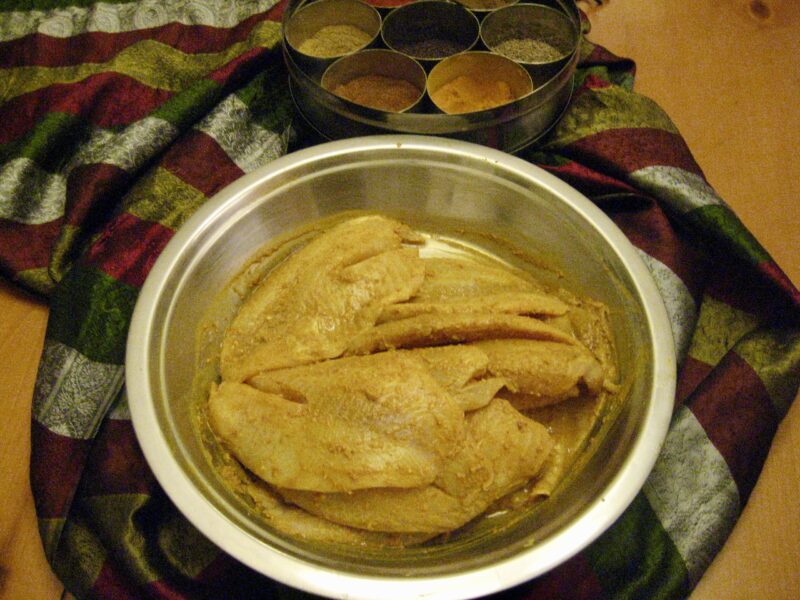My brother is visiting us from the United States. It has been nearly ten years since he left, so I am determined to fix him all the Indian dishes he loves. My husband is teaching at the Institute of Defense Management in Trimulgherry, a part of the military cantonment near the ancient twin cities of Hyderabad and Secunderabad.
Built on the Deccan Plateau in south-central India, the cities are now a huge metropolis. We live in the cantonment area, but I am driving on the Tank Bunk Road to the local fishers at Hussain Sagar Lake. The Tank Bund Road links the two cities. It is my go-to place for fish, as the fish retailers hawk their catch along the roadside curb during the late afternoon. The fish are wrapped in gunny sackcloth and kept in iceboxes to keep them fresh.
My favorite is the silver pomfret which is most common and found abundantly in the seas of the Indo-Pacific area and all along the coast of the Indian subcontinent. Different species of the fish (family Bramidae) are also found in the Atlantic and Pacific. I buy pomfret because I know it did not come from the lake’s murky waters.
There are, of course, many varieties of river and sea fish, but today I choose pomfret. I always have it cooked as soon as I get home, as I do not want to risk refrigerating it. No matter how much I get, by the time we finish eating it is all gone!
I check out the fish to see if they are fresh. The eyes seem clear, and the skin bounces back when pressed. The gills are also moist and reddish. Most importantly, no pongy, fishy smell, just the regular smell of fish.
 My favorite fishmonger is there, so I don’t have to haggle back and forth over price. I pick two good fish and have him clean and prep them whole for me. When I get home, my cook will wash them well and slice them into fillets.
My favorite fishmonger is there, so I don’t have to haggle back and forth over price. I pick two good fish and have him clean and prep them whole for me. When I get home, my cook will wash them well and slice them into fillets.
I plan to fix Masala Fish Fillets using one of my mama’s recipes. It is a simple recipe, flavorful and tangy with the use of masalas and vinegar.
A simple recipe, flavorful and tangy with the use of masalas (spices) and vinegar.
- 1 lb fish fillets (any fish that is good for frying like cod, halibut, tilapia, catfish, or king mackerel )
- 1 tbsp garlic paste
- 1 tsp turmeric powder
- 1 tsp cumin powder
- ½ tsp chili powder (or to your taste)
- ¾ tsp salt
- ¼ cup vinegar (malt or distilled, or lime/lemon juice)
- ½ tbsp chickpea flour (besan) (or cornstarch)
- 3-4 tbsp cooking oil
Wash the fish well and pat dry. Place in a wide bowl and rub the fillets with the chickpea flour.
Blend the spices, garlic paste, and vinegar. Coat the fish slices well and marinate for at least 15 minutes.
Heat oil in a heavy-bottomed frying pan large enough to accommodate the number of fillets you are frying.
When the oil is well heated, carefully lower the fish slices into the oil. If you have any masala left over, brush or spoon it over the fillet. Let cook for 7-10 minutes, and then carefully turn the fillet over and fry the other side for another 6-7 minutes or till nicely cooked, and the fish starts to flake.
Serve garnished with lemon wedges.
Goes well with any kind of pilaf, fries, or a wrap.
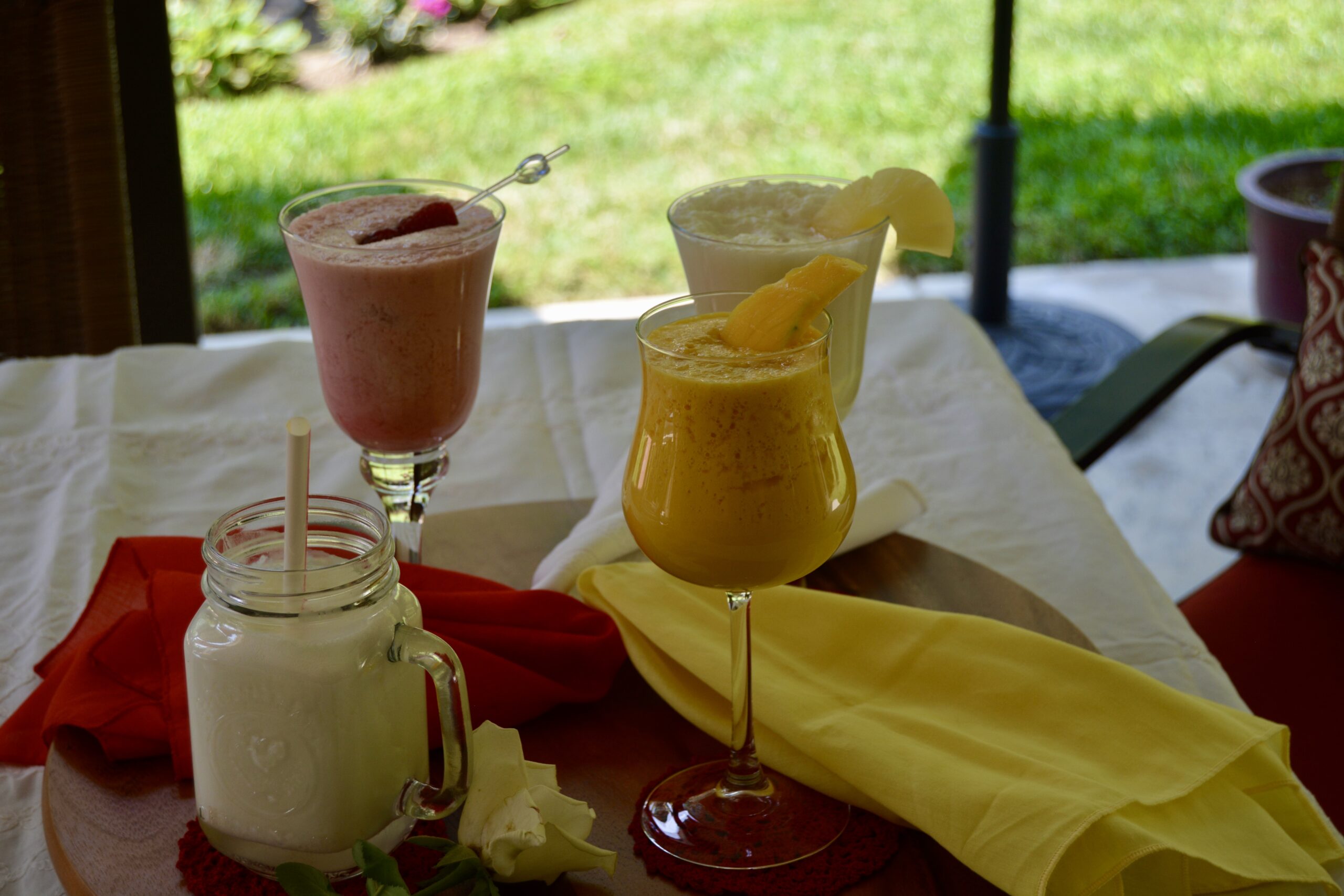

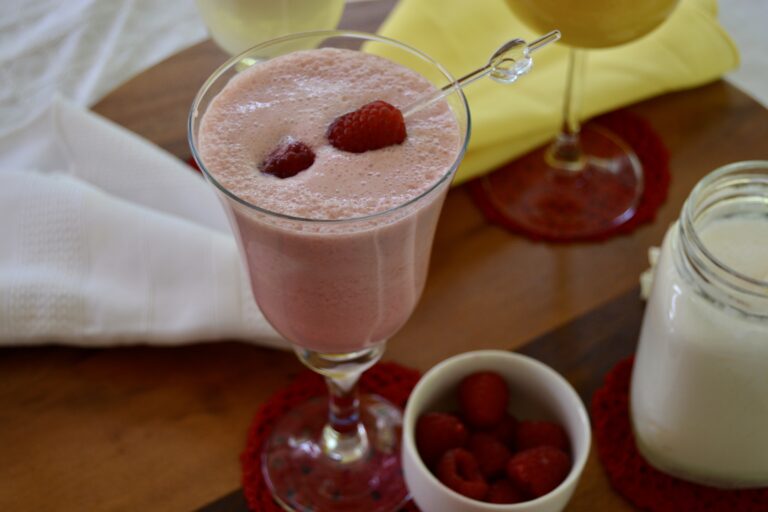
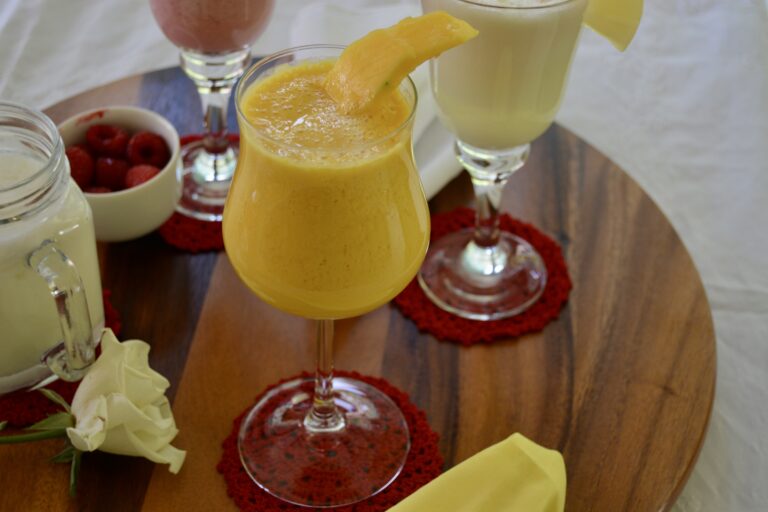

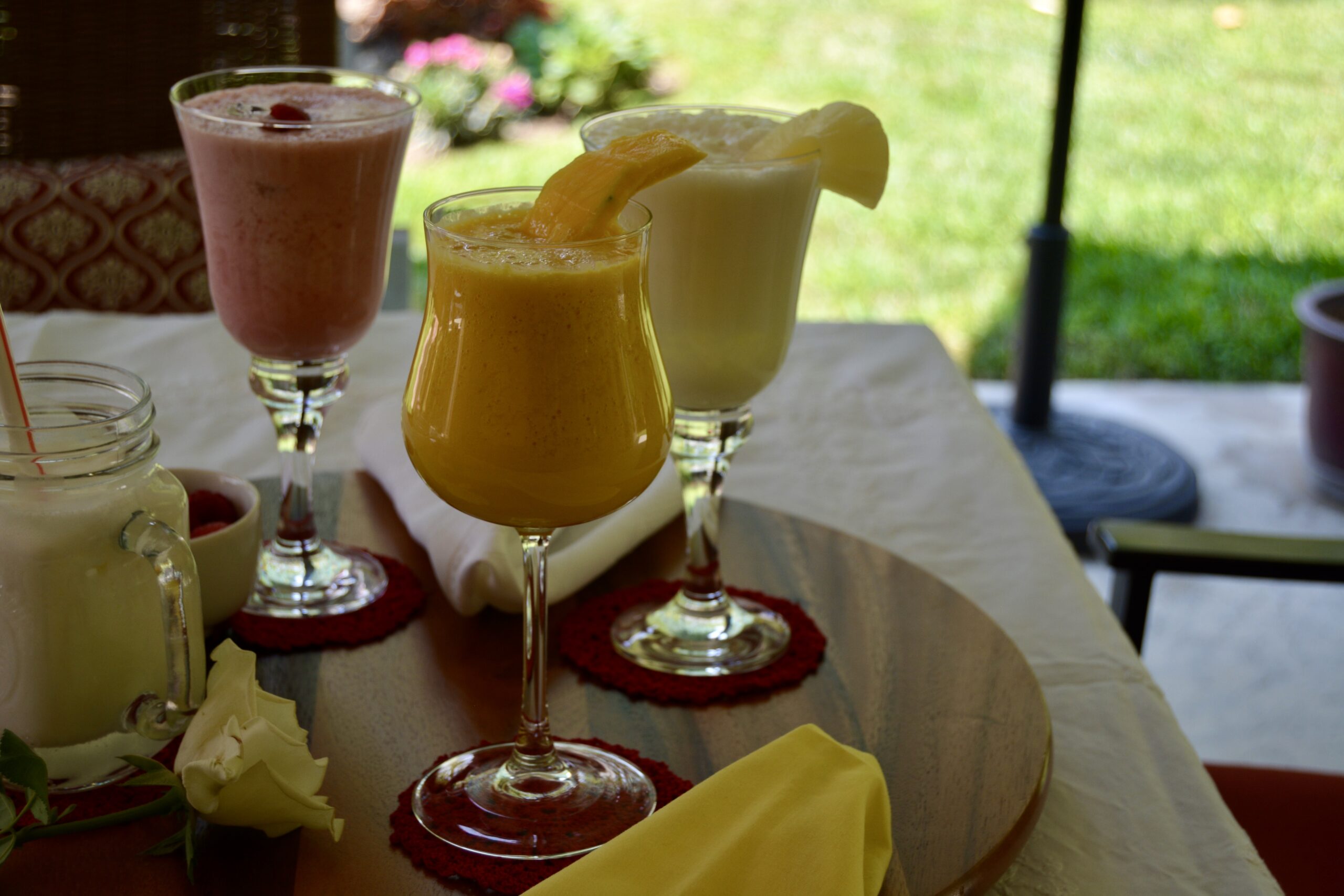
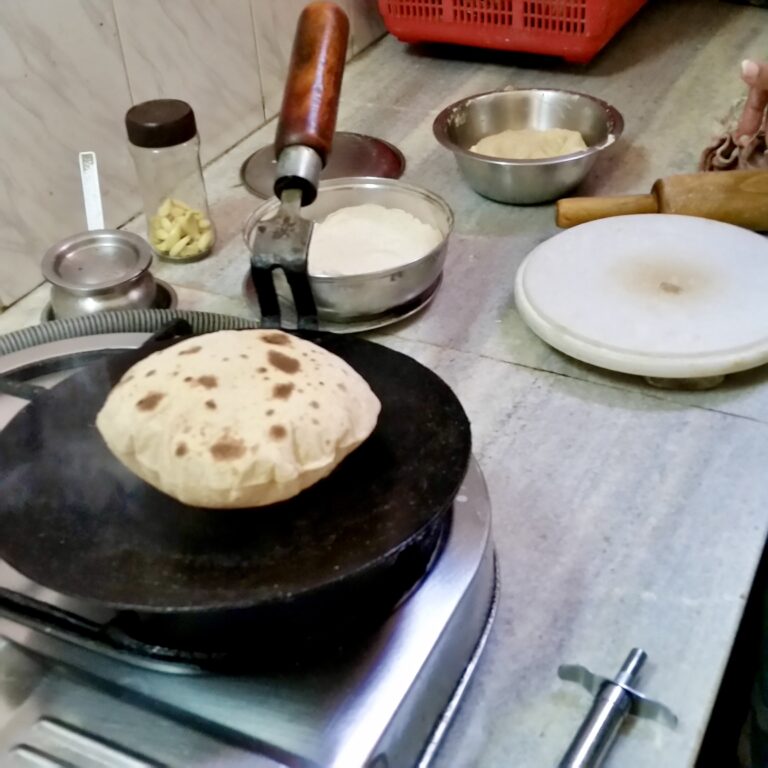
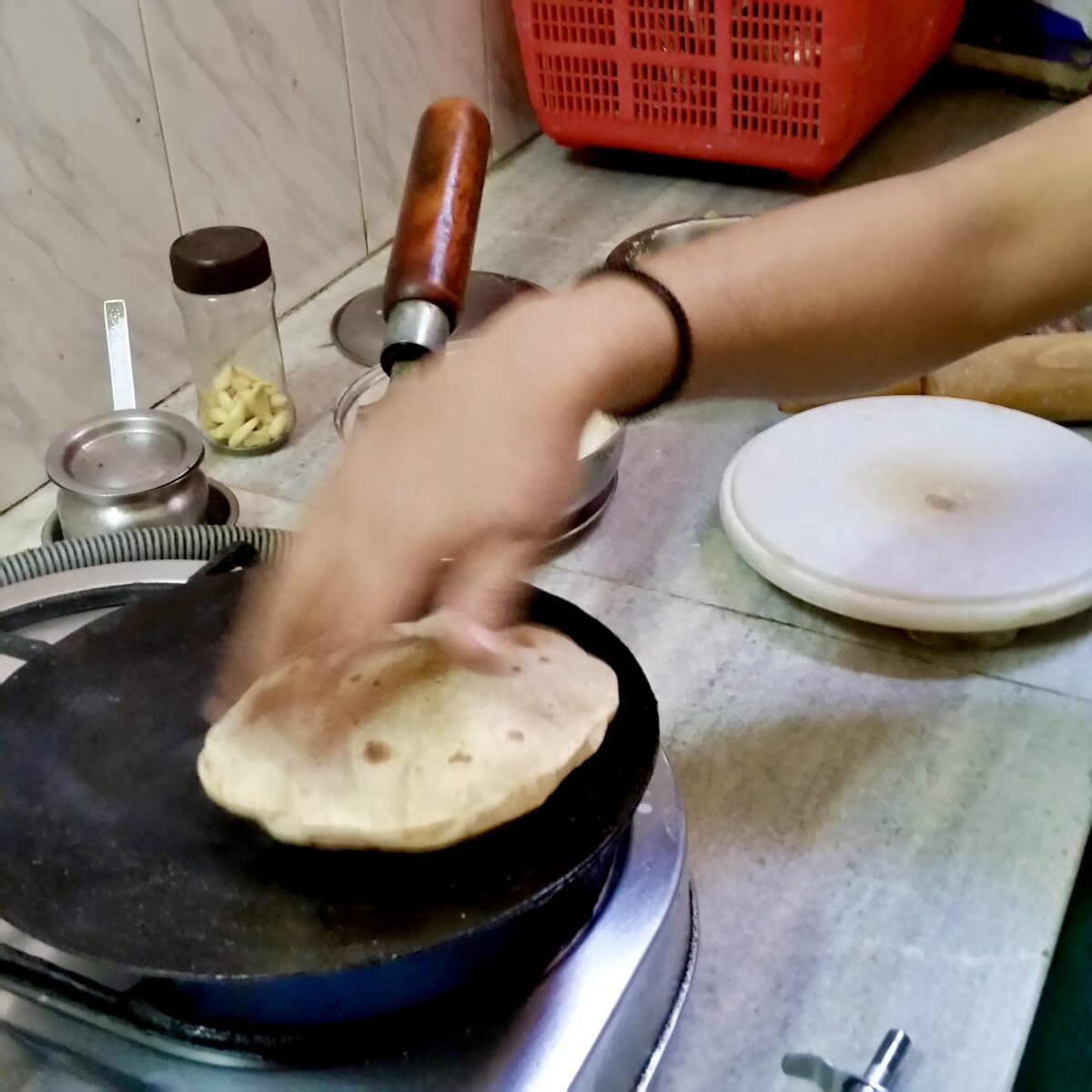
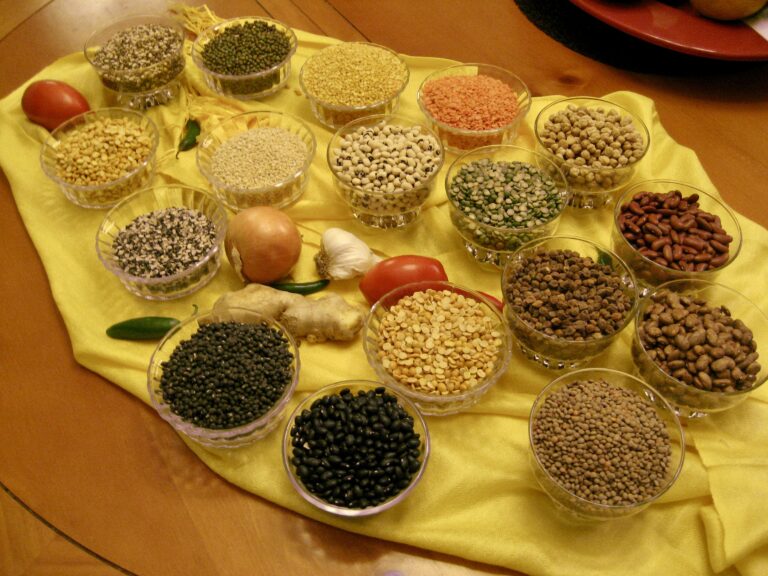
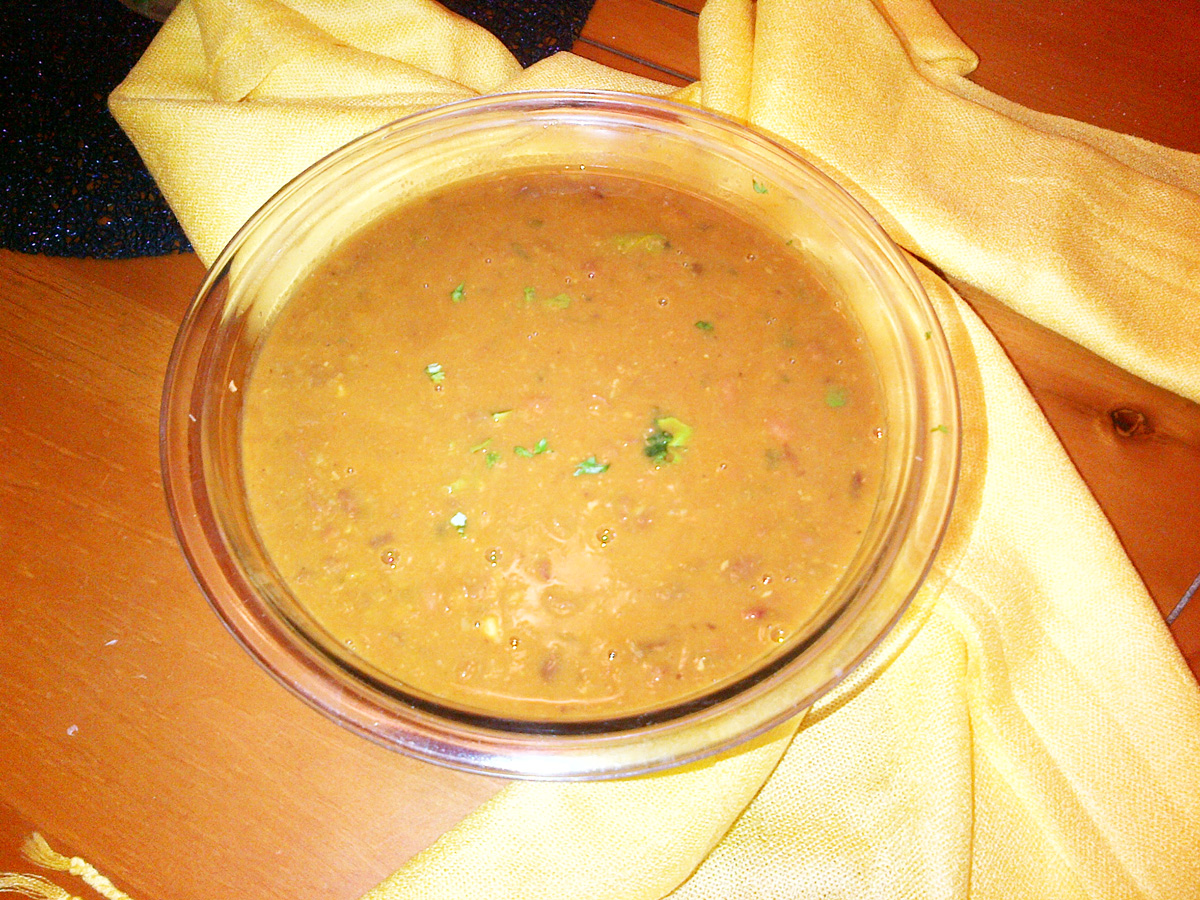
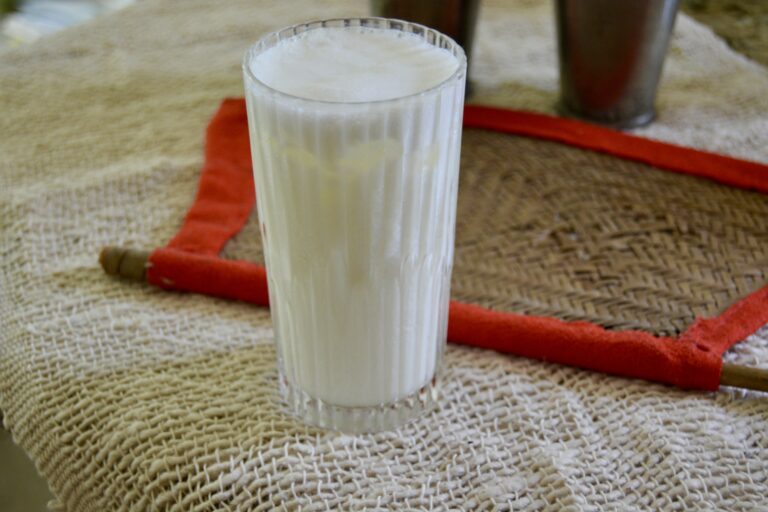
 We are on our famous cross-country trip across the hot and heated summer plains of Northern India, making our way to the cool hills of Jammu and Kashmir. It has been a long ride from our night stop at Ambala in Punjab. It is only mid-morning, but the sun is bearing down strong and hard. Hot gusts of dust hit us from time to time. We plan to make a pit stop at Ludhiana, which is about 65 miles away from Ambala. The roads are rough and the going slow. It is a busy highway, with the laden public carriers (trucks with merchandise) swerving dangerously close. We call them Public Killers as there are involved in so many fatal road accidents.
We are on our famous cross-country trip across the hot and heated summer plains of Northern India, making our way to the cool hills of Jammu and Kashmir. It has been a long ride from our night stop at Ambala in Punjab. It is only mid-morning, but the sun is bearing down strong and hard. Hot gusts of dust hit us from time to time. We plan to make a pit stop at Ludhiana, which is about 65 miles away from Ambala. The roads are rough and the going slow. It is a busy highway, with the laden public carriers (trucks with merchandise) swerving dangerously close. We call them Public Killers as there are involved in so many fatal road accidents.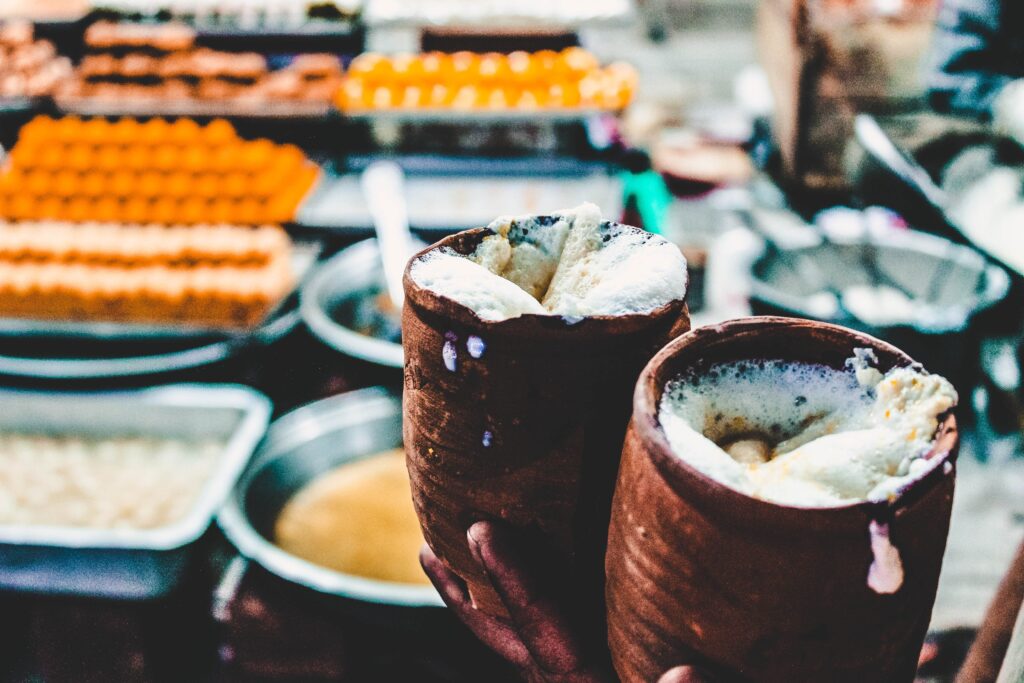 I watch the halwai closely as he fixes the drinks. He takes big dollops of yogurt from the large flat earthenware pot, on which he has a block of ice to keep the yogurt cool. The ice is wrapped in a gunny sack to prevent it from melting. Those were the times when small restaurants and dhabbas did not have refrigerators. Things are different today. The yogurt is so thick you can cut through it with a knife. He puts the yogurt into a large stainless steel jug. To this he adds sugar and iced water along with the juice of a couple of lemons. After he quickly blends together the ingredients, he pours the lassi into tall glasses.
I watch the halwai closely as he fixes the drinks. He takes big dollops of yogurt from the large flat earthenware pot, on which he has a block of ice to keep the yogurt cool. The ice is wrapped in a gunny sack to prevent it from melting. Those were the times when small restaurants and dhabbas did not have refrigerators. Things are different today. The yogurt is so thick you can cut through it with a knife. He puts the yogurt into a large stainless steel jug. To this he adds sugar and iced water along with the juice of a couple of lemons. After he quickly blends together the ingredients, he pours the lassi into tall glasses.
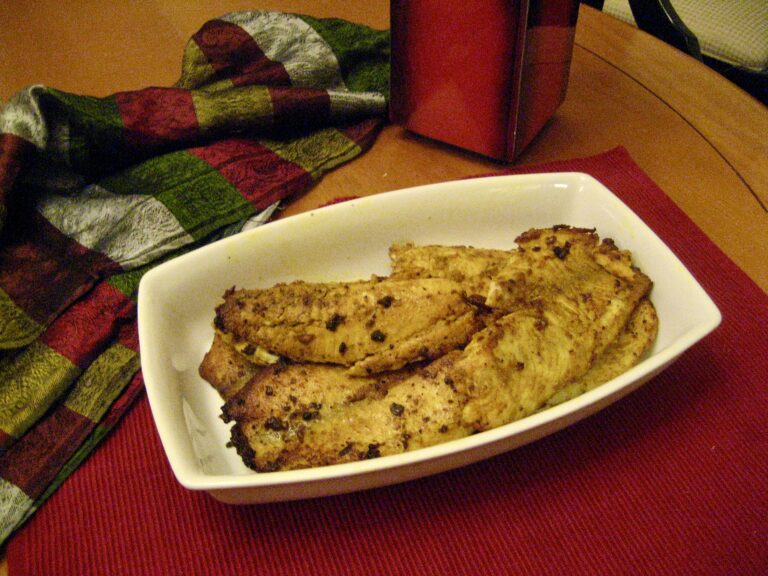
 My favorite fishmonger is there, so I don’t have to haggle back and forth over price. I pick two good fish and have him clean and prep them whole for me. When I get home, my cook will wash them well and slice them into fillets.
My favorite fishmonger is there, so I don’t have to haggle back and forth over price. I pick two good fish and have him clean and prep them whole for me. When I get home, my cook will wash them well and slice them into fillets.